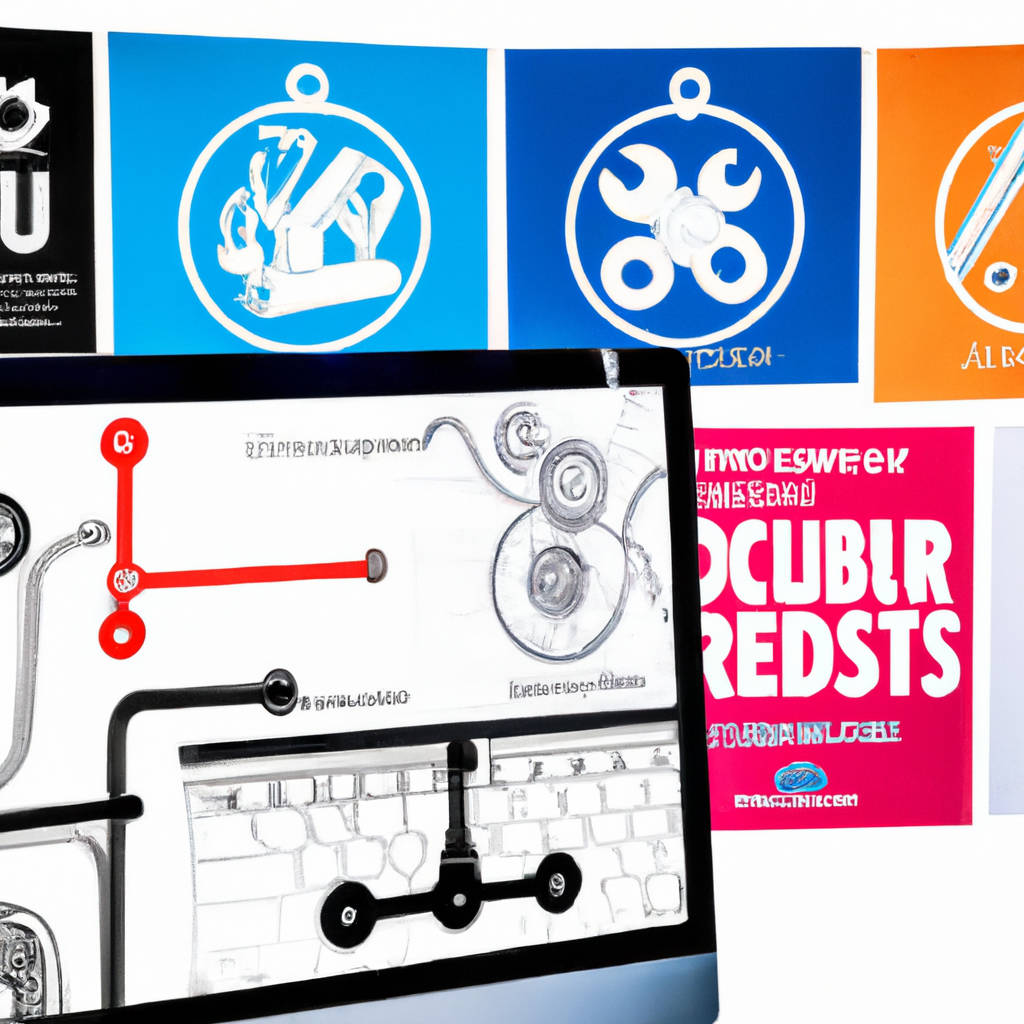In the year 2024, remote work has become the norm for many organizations, and this paradigm shift has necessitated the development and utilization of a variety of software tools to facilitate seamless collaboration and productivity. Project management tools like Trello and Asana have become invaluable, allowing teams to track progress, assign tasks, and manage deadlines efficiently from disparate locations. Communication platforms such as Slack and Microsoft Teams have evolved beyond simple text-based messaging, incorporating advanced features like video conferencing, screen sharing, and integrated task management, providing a comprehensive space for teams to interact virtually. Cloud services like Google Drive and Dropbox provide secure, accessible storage for files, enabling real-time collaboration and ensuring that all team members have access to necessary resources.
Software development tools like GitHub and Bitbucket have likewise become crucial, facilitating version control and code collaboration for remote development teams. Time tracking tools such as Toggl and Harvest play a significant role in maintaining accountability and productivity, while also helping to manage workflows and schedules. Security software, including VPNs and advanced firewalls, have become more important than ever, providing necessary protection for sensitive data in an increasingly decentralized work environment.
Design tools like Adobe Creative Cloud and Figma offer remote designers a plethora of resources and collaborative features, making it easier to share, review, and iterate on designs. Learning management systems like Moodle and Blackboard are also essential for remote education and training, delivering coursework, tracking progress, and facilitating communication between learners and educators.
Virtual office spaces, an emerging trend in 2024, have revolutionized the concept of remote work. Platforms like Sococo and Pragli provide a virtual office environment where teams can interact as if they were in a physical office, helping to maintain a sense of camaraderie and team culture.
Lastly, wellness tools such as Headspace and Calm have gained prominence, reinforcing the importance of mental health and well-being in remote work settings. These tools offer guided meditations, mindfulness exercises, and stress management techniques, all of which contribute to a more balanced and healthy work-from-home experience.
In conclusion, the essential software tools for remote work in 2024 are diverse and multifunctional, serving various needs from project management and communication, to security and wellness. These tools have not only made remote work possible but have also enhanced its efficiency and viability in the long term.

Essential Tools for Remote Work
As the work environment shifts to more flexible settings, many professionals are finding themselves working remotely. To maintain productivity and organization, a set of essential tools are needed for this remote work setup. One of the primary tools is a reliable computer system equipped with the necessary software programs tailored to the job’s specific requirements. A stable internet connection is another fundamental tool for remote work, enabling seamless communication, data sharing, and access to cloud-based platforms.
Additionally, project management applications like Trello or Asana are essential to keep track of tasks, deadlines, and teamwork. These platforms facilitate collaboration and ensure that everyone is on the same page, despite the physical distance. Tools like Slack and Microsoft Teams are also valuable for instantaneous communication, replicating the ease of walking up to someone’s desk in a conventional office.
Remote workers also need a secure Virtual Private Network (VPN) to ensure their data and communications are encrypted, protecting both the employee and the company from potential cyber threats. Cloud storage solutions like Google Drive or Dropbox are also vital for remote work, providing a space for shared files and documents that can be accessed from anywhere, anytime.
Video conferencing tools such as Zoom, Google Meet or Microsoft Teams have become essential in a remote work setup, providing a platform for virtual meetings, presentations, and even informal catch-ups. These platforms have features that enable screen sharing, breakout rooms, and recording options that make remote meetings just as effective as those conducted in person.
Finally, time management tools can also play a critical role for remote workers. Apps like RescueTime or Toggl can help maintain work-life balance by tracking how much time is spent on different tasks.
These tools, when combined, help to create a remote work environment that is efficient, effective, and seamless; mirroring the functionality of a traditional office but with the added flexibility of working from home.
Choosing the Right Tool Stack for Remote Workers
Choosing the right tool stack for remote workers requires careful consideration of several factors. The effectiveness and productivity of a remote team largely depend on the set of digital tools they utilize to collaborate, communicate, and complete tasks. The initial step in this process should be to assess the specific needs of your team. This includes identifying the tasks that will be performed remotely, the level of collaboration required, and the degree of accessibility needed. It is also crucial to consider the comfort and familiarity of the team with the proposed tools. Selecting tools that are user-friendly and intuitive can reduce the learning curve and boost productivity.
For smooth communication and seamless collaboration, consider incorporating video conferencing tools, project management platforms, file-sharing applications, and instant messaging software in your tool stack. These tools should be reliable, secure, and capable of supporting the size of your team. Additionally, they should have the capacity to integrate with each other to ensure a streamlined workflow.
Moreover, the choice of tools should also align with the company’s budget. While some tools are available at no cost, they may lack advanced features or have limitations on usage. On the other hand, premium tools come with a cost but offer advanced features and better support. Therefore, a balance should be struck between cost-effectiveness and functionality.
Lastly, it’s essential to remember that the choice of tools may need to be reevaluated and adjusted over time. As the team grows and the nature of work evolves, the tools that once seemed perfect may no longer serve their purpose effectively. Hence, regular assessment and updates to the tool stack are necessary to ensure it continues to meet the needs of your remote team.
In conclusion, selecting the right tool stack for remote workers is a multi-faceted task that requires careful analysis of the team’s needs, budget considerations, and a commitment to continuous evaluation and improvement. The right tool stack can significantly enhance the efficiency and satisfaction of remote workers, ultimately leading to the success of the remote team.

Must-Have Remote Work Tools
In the current era where remote work has become a norm, certain tools have emerged as essentials to ensure productivity, seamless communication, and effective collaboration. First and foremost, a reliable, high-speed internet connection is the backbone of remote work, enabling all online operations. Secondly, tools for virtual meetings, such as Zoom or MS Teams, have become integral as they allow face-to-face interaction, screen sharing, and group discussions. File sharing and collaboration tools, like Google Drive or Dropbox, are also crucial for easy access and real-time editing of shared documents.
Project Management tools, such as Trello or Asana, are beneficial for tracking progress, assigning tasks, and maintaining organization within teams. Communication platforms like Slack help in instant messaging and creating team channels for various projects. Furthermore, tools for time management and productivity, such as RescueTime or Toggl, can assist in managing work hours and analyzing productivity patterns. Secure and robust VPN services ensure data protection while working remotely. Lastly, an ergonomic setup including a comfortable desk, chair, and good lighting conditions can make a significant difference in work comfort and productivity. While the requirement of these tools may vary depending on individual needs and the nature of work, they collectively aid in creating an efficient and comfortable remote working environment.
Conclusion
In the realm of contemplation, analysis, and discourse, a conclusion carries immense value. It is the finale, the closing act that ties together all the threads of thought that were previously unraveled. It’s like the final stroke of a painter on a canvas, capturing the essence of the whole artwork. A conclusion is not merely a summary or repetition of what has been discussed but a synthesis of the main points into a coherent whole providing a perspective or a final viewpoint on the topic. It forms an indispensable part of any logical argument, thesis, or academic paper.
It’s the part that leaves a lasting impression in the mind of the reader, making it as crucial as the introduction. Composing a compelling conclusion requires a specific skill set. It demands a precise understanding of the subject matter, the ability to correlate the various points discussed, and the capacity to articulate this understanding in a concise, clear, and engaging manner. It is always important to remember that a conclusion should not introduce new ideas or perspectives but should encapsulate the essence of the discussion or argument in a way that it resonates with the reader.
It is like the final note in a musical composition, providing closure and finality yet leaving a lingering effect. So, in every piece of writing or argument, the conclusion holds a pivotal role. It is the final thought or the closing statement that leaves an imprint on the reader’s mind, shaping their understanding and influencing their perspective.
